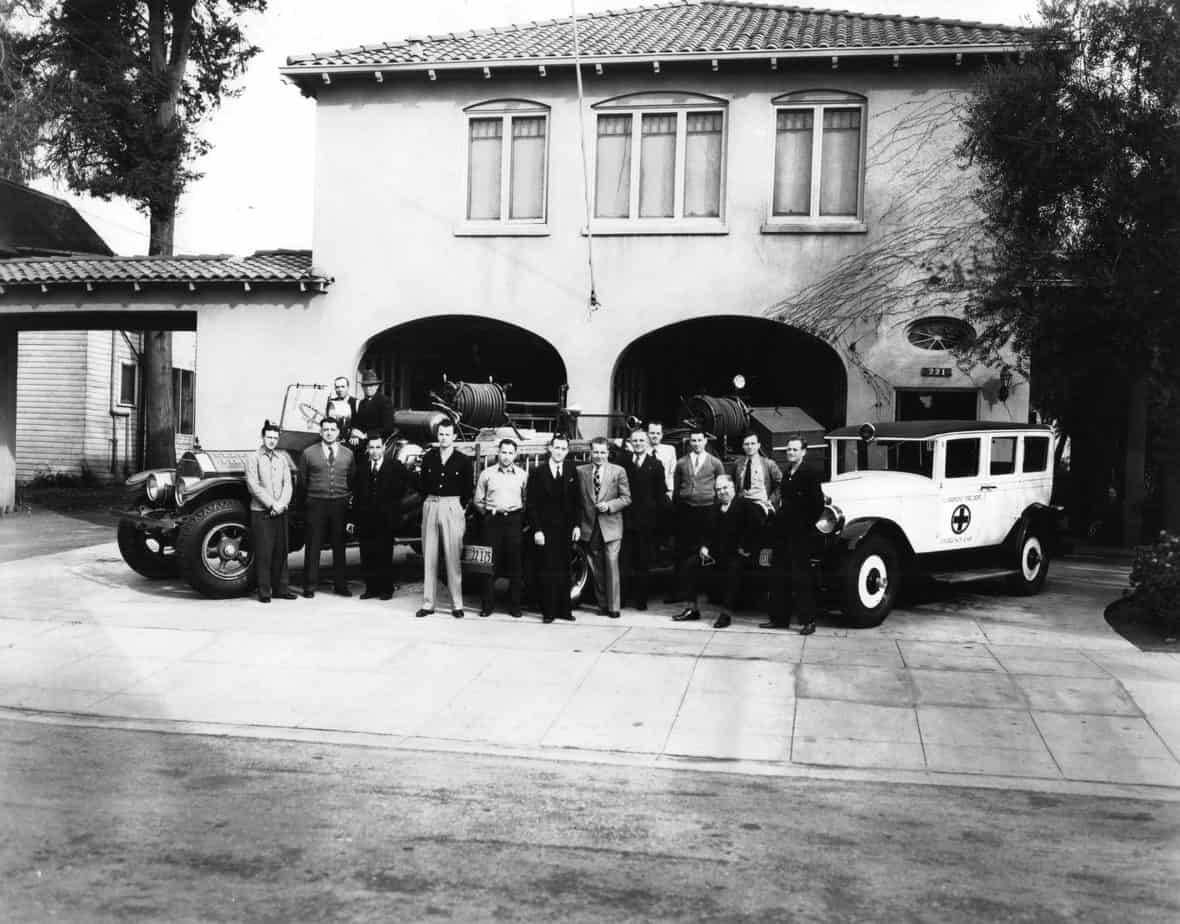Claremont Heritage: Policing Claremont—part 2


In 1911, the speeding controversy in Claremont became known county-wide and drew the attention of the Los Angeles Examiner. The newspaper published a cartoon and an editorial:
“The little college town of Claremont is suffering from an acute attack of too much Johnson,”?wrote the Examiner. “In a spasm of reform, Claremont recently appointed pugnacious J.A. Johnson, City Marshal, and now the representative citizens are nervously lying awake at nights. They also jump sideways when you speak to them. For Marshal Johnson is enforcing the law to the letter, and then some. He is arresting the owner or operator of everything of a vehicle nature that proceeds through the city faster than a walk. His favorite method is to lie in wait for automobiles from Los Angeles and as they come sailing smoothly along the superb Foothill Boulevard, jump out and arrest them for violation of the sacred speed laws of Claremont.”
The cartoon depicted a number of scenes as interpreted by the Examiner. One showed justice being executed, the motor officer with his cycle, the judge mobile with a horse and buggy and the motorist paying the fine on the spot. One scene portrayed an elderly man in a wheelchair before a judge who asks Johnson, “What’s the charge, Marshal?” Johnson replies, “Reckless drivin’ B’Gosh!!”
The controversy led to the resignation of Claremont’s first president (mayor) of the board of trustees (city council). The resignation did little to slow down Marshal Johnson, who had the support of the new mayor, F.H. Geer, who justified his support: “We have to have the present speed laws to make things endurable. At that they are very lenient. We did not enforce the ordinance for nearly a year, and the motorists became reckless.”
The marshal was voted a billy club and an electric flashlight. The two motor cops, Tom Bartlett and Walker Jones, became deputy marshals. Johnson then requested a uniform and a revolver, insisting the dignity of the law required it. The board refused to purchase the uniform, but authorized the gun. Johnson agreed to purchase the uniform himself out of his $25 a month salary.
When the city first incorporated in 1907, there was no city hall. The board of trustees met at various locations until it purchased the Victorian grammar school and moved it across the street from what is now Sycamore School, to the southeast corner of Eighth Street and Yale.
As was the custom in those days, all the city offices were housed in one building. In June of 1913, a bid was accepted for the construction of Claremont’s first jail. Johnson was responsible for building the two-cell jail out of fieldstone and it was built directly behind city hall. The building is still in use today and can be seen in the parking lot area behind the Masons’ building.
The controversial Johnson remained marshal until 1921, when Charles Clevenger was named marshal at a salary of $125 a month. As notorious as Johnson had been, Clevenger was the opposite and was well-liked. Clevenger served for seven years as marshal until state law changed for small city police departments, when he was given a raise to $135 per month and named police chief.
Clevenger patrolled the entire town, monitored the Pomona College football games, served as the traffic cop and the town night watchman, either on foot or on his bicycle, all with Claremont’s first “police dog,” a small terrier mix named Spitz.
Clevenger also oversaw the move of the police department in 1925, when it relocated to city hall and the fire department to the Second Street building that now houses the city council chambers. In 1932, Clevenger’s health forced him to retire as chief, but he continued as the night patrolman until his death in 1936.
Chief Walter Williams succeeded Clevenger and with him brought changes. He added personnel, including the first cross-trained firefighter/policeman. At that time there was no police car or radio system, so he developed a system of red lights. The lights were placed on the four sides of the police station at city hall and in some of the alleys. If there was a call, the patrolman was to monitor the lights and if they were on, the officer was to return to the station immediately. The system remained in effect until 1949, when the department secured radio communication. Williams was also responsible for enacting the overnight parking ordinance, which remains in effect today.
In 1924, the citizens of Claremont passed a $161,000 bond measure to pay for the completion of the sewer system, to address needed street work and to build a combination police station, fire station and city hall. Construction began in June 1925, and the new building opened on November 25, 1925, with a citizen reception. There were speeches and the evening was spent dancing in council chambers, now the Citrus conference room that is located above the present-day council chambers. The fire and the police stations were housed on the first floor.
After World War II, the police department grew along with the city. City hall had expanded after the war and the police department eventually outgrew its space, so a new station was built on Bonita Avenue in 1972, where it resides today. The mid-century modern building was designed by local architects Criley and McDowell.
Over the years the department has doubled in size and the building, that no longer meets state and federal building and earthquake standards, has been adapted to its maximum capacity. The citizens have been asked to approve a new bond measure in June.
In 1950, the police department budget was $26,000 or 12 percent of the city budget. That grew to $5.7 million or 25 percent of the budget in 1999. Today the department budget is 44 percent of the budget at nearly $11.2 million. The voters will now decide if the police station will grow to catch up to the growth of the department.







0 Comments